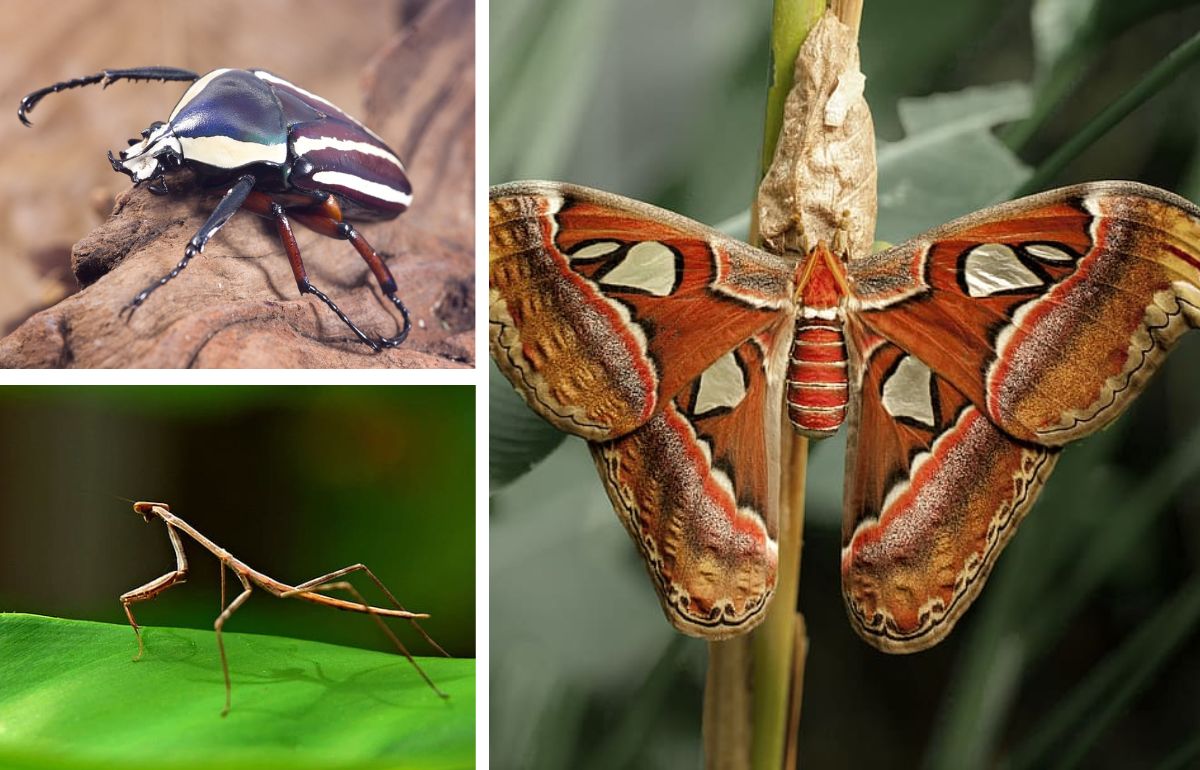Insects represent the largest percentage of the world’s organisms. And although we usually think of insects as some of the smallest living things to walk the planet, there are some species that can grow up to 7 inches long—roughly the same size as your hand.
I’ll be quite honest in saying that insects freak me out. I don’t know what it is about them, but I can’t even get close to one without getting the heebie-jeebies. But despite the fact that I am too scared to go anywhere near an insect—I can’t even get one out of my house—I will admit that the world’s largest insects are incredibly fascinating. However, I still wouldn’t like to be within ten feet of one.
During the prehistoric ages, insects were far bigger than what we know them today, and I even remember watching a documentary about the largest dragonfly to ever exist—the Meganisoptera—which had a wingspan of 28 inches and measured 17 inches from head to tail.
Much like the dinosaurs, these jumbo-sized insects became extinct millions of years ago. But why now are insects only a fraction of the size? Well, during the time of the dinosaurs, the oxygen content in the air was much higher than it is today, meaning insects could grow to incredible sizes. Now, I’m not going to say less oxygen in the air is a good thing. But I am grateful knowing that bird-sized bugs aren’t flying about over my head.
Although extraordinarily large insects are now a thing of the past, there are still some species that are far bigger than the typical ant, spider, or bee—let’s take a look at them!
Largest Insect in the World
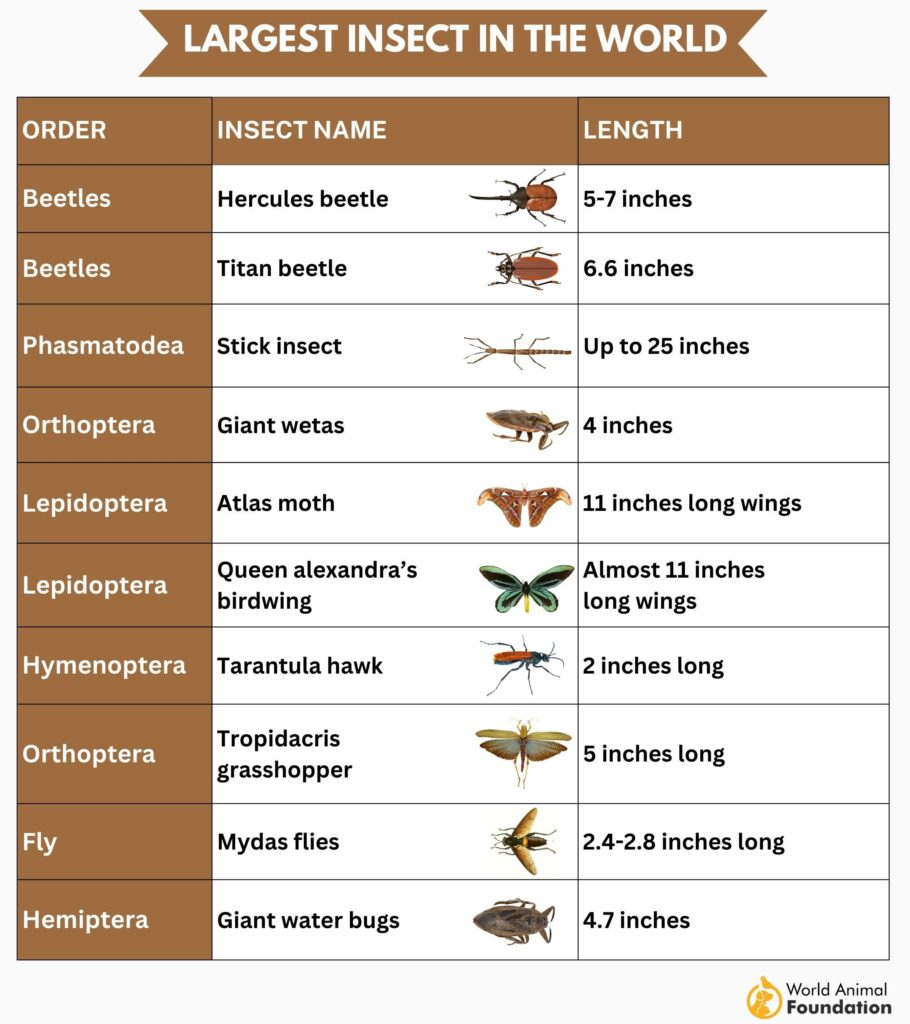
You may have never come into contact with some of the largest insects on the planet, thinking they only live in rainforests in countries far different from your own. However, even the United States plays host to various mega-bug species. So, of all the insects in the world, here are 12 of the biggest that still walk—or fly—the planet today.
Hercules Beetles
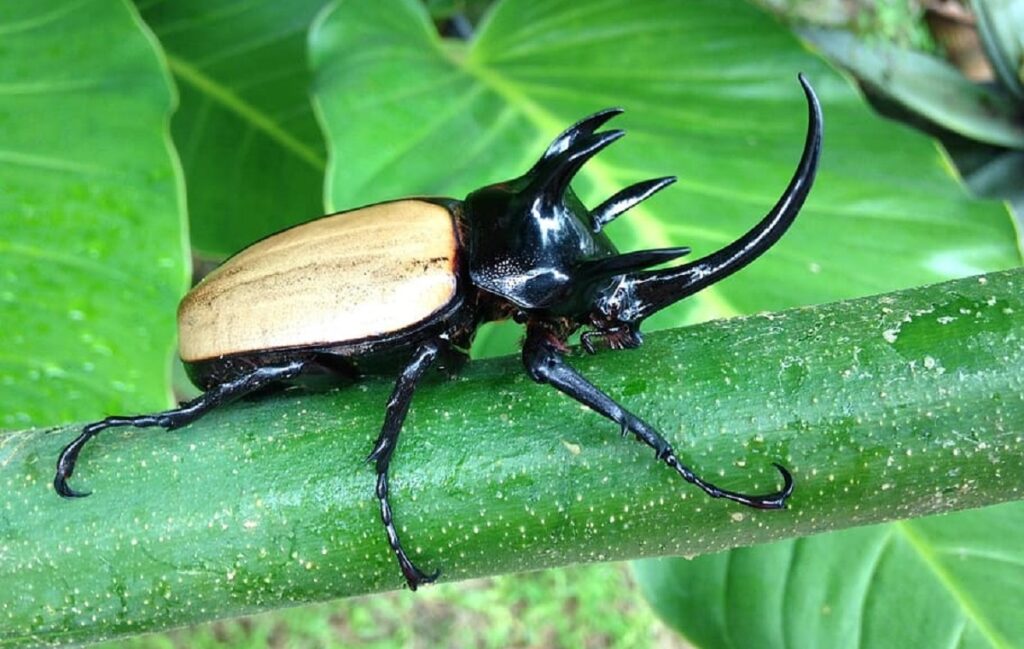
The Hercules beetle, a species of Rhinoceros beetle which was named after the Greek and Roman mythological hero, is the longest beetle species on the planet. And guess what? It can even fly, making it the world’s largest flying insect.
Hercules beetles are native to the rainforests in South America, Central America, and the Caribbean islands. And although they’re the largest species of insect on the planet, only males carry that title.
Male beetles have massive horns, which account for more than half of their body length. And these horns that the beetles use to settle disputes with other males can result in male Hercules beetles reaching up to 7 inches in length.
Even in the beetle’s two-year larval stage, they are ginormous as they grow up to 5 inches in length—that’s a big bug.
Titan Beetle
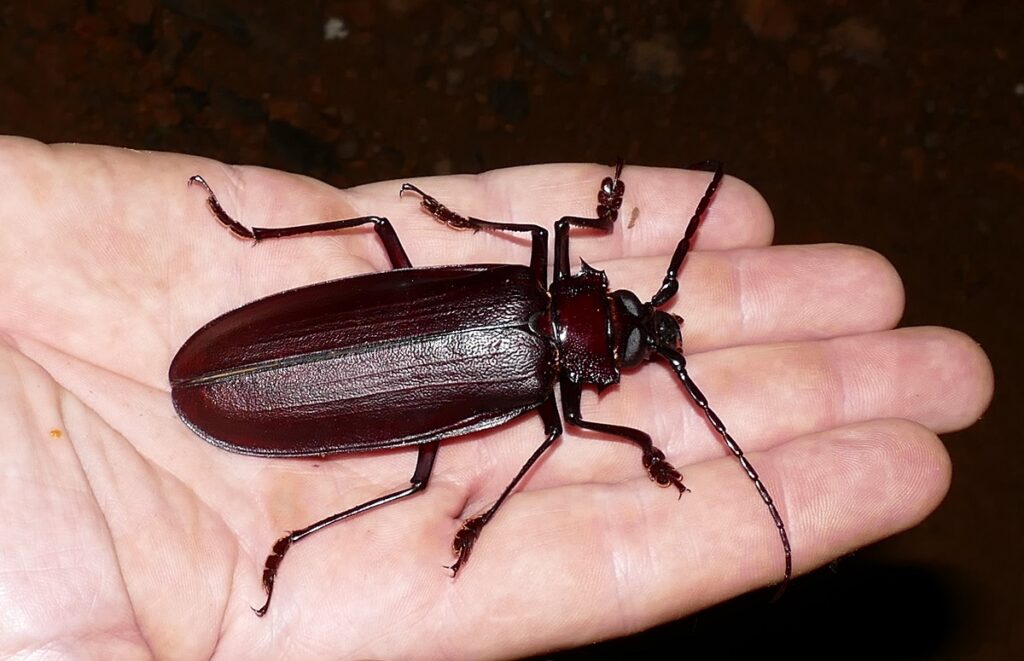
Although the Hercules beetle is the longest beetle on the planet in terms of body size—because, remember, Hercules beetles are largely made up of horns—the titan beetle takes the trophy. Titan beetles can grow up to 6.6 inches in length in the rainforests of South America, making them the largest beetle by body size.
And if you thought their size was cool, wait until you hear about their mandibles. Titan beetles have incredibly powerful mandibles (jaw bones) which can snap a pencil in half. Luckily adult titan beetles don’t actually feed, but if they did, I’m sure their bite would seriously hurt.
Scientists have never actually discovered or observed titan beetle larvae, but from boreholes that they’ve found in trees, they’ve estimated that larvae can grow 2 inches wide and up to 1 foot in length, gathering up enough energy to see them through to adulthood.
Stick Insect
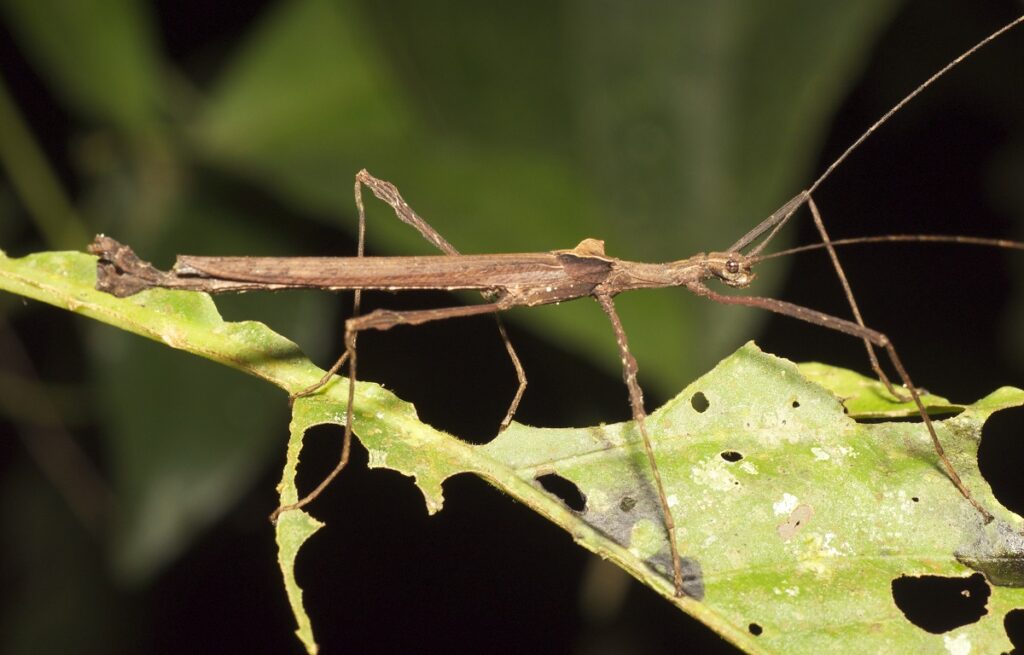
Stick insects are peculiar insects that have found one of the best forms of camouflage from predators. As their name suggests, stick insects resemble sticks so that they can hide themselves in branches, twigs, and foliage. With most species measuring over 1 foot long, stick insects are the world’s longest insect.
Although it was thought for a long time that the longest species was around 22 inches in length, a recently discovered species—found in China in 2016—the Phryganistria chinensis, measures 25 inches, putting them at the top of the leaderboard.
Giant Wetas

Closely related to crickets, the giant weta, which is native to the island of New Zealand, can grow up to 4 inches long and weigh up to 1.2 ounces. Now, they aren’t the biggest insect on the planet, but they are the heaviest, as one female Little Barrier giant weta weighed a whopping 2.5 ounces.
In the indigenous Maori language, weta actually translates to “god of ugly things” —somewhat fitting if you ask me—and when these bugs are threatened, they defend themselves with spikes that run down their legs.
Atlas Moth
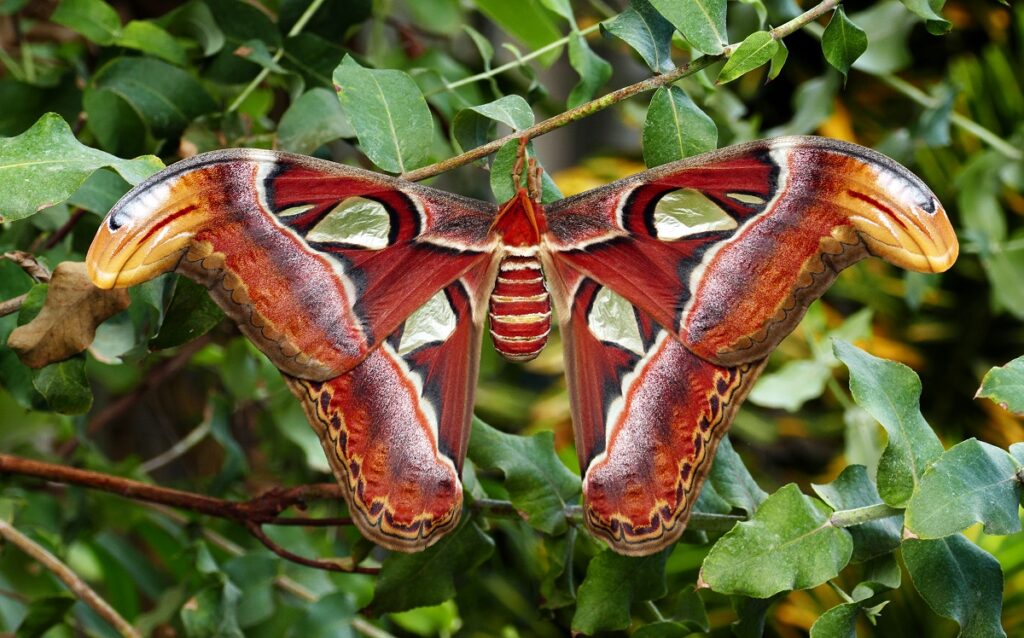
The prettiest giant bug and the largest moth in the world is the Atlas moth which is native to Asia’s tropical forests. With a wingspan of 11 inches and a total surface area of 25 inches, Atlas moths have some of the largest wings in the bug world.
There are two moths with larger wings—the Hercules moth and the white witch—however, when you combine mass, wingspan, and surface area, the Atlas moth comes out on top.
Goliath Beetle
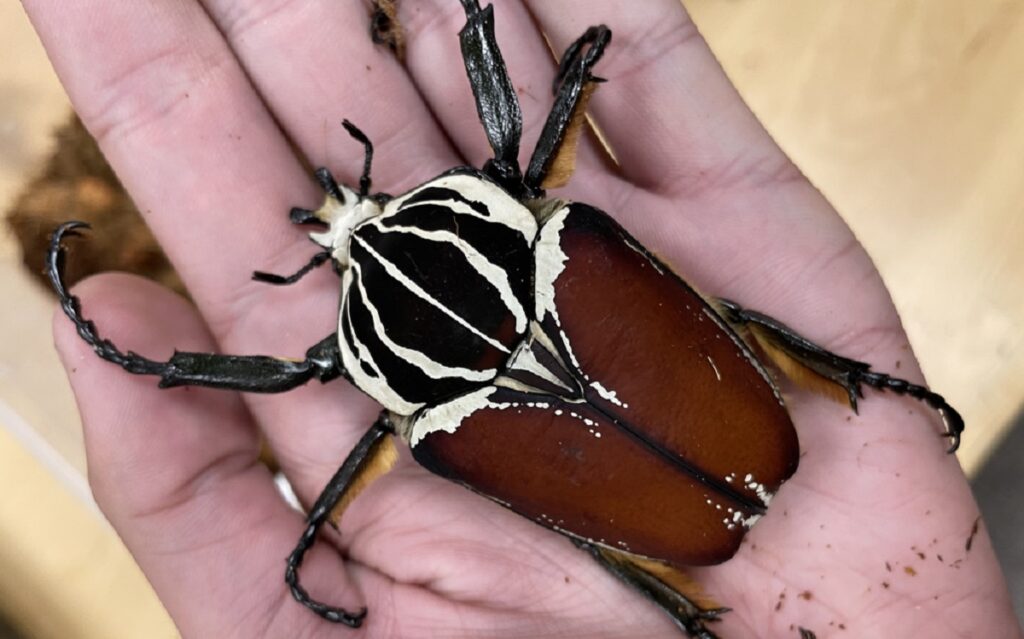
When you take into consideration a Goliath beetle’s weight and bulk, they’re up there with one of the largest insects to call Earth home. Native to Africa, male Goliath beetles can measure 4 inches long and weigh over 2 ounces when fully grown.
Surprisingly, however, Goliath beetles are even larger in their larval stage as they can weigh up to 3.5 ounces, making them one of the heaviest—if not the heaviest—insects on the planet.
Queen Alexandra’s Birdwing
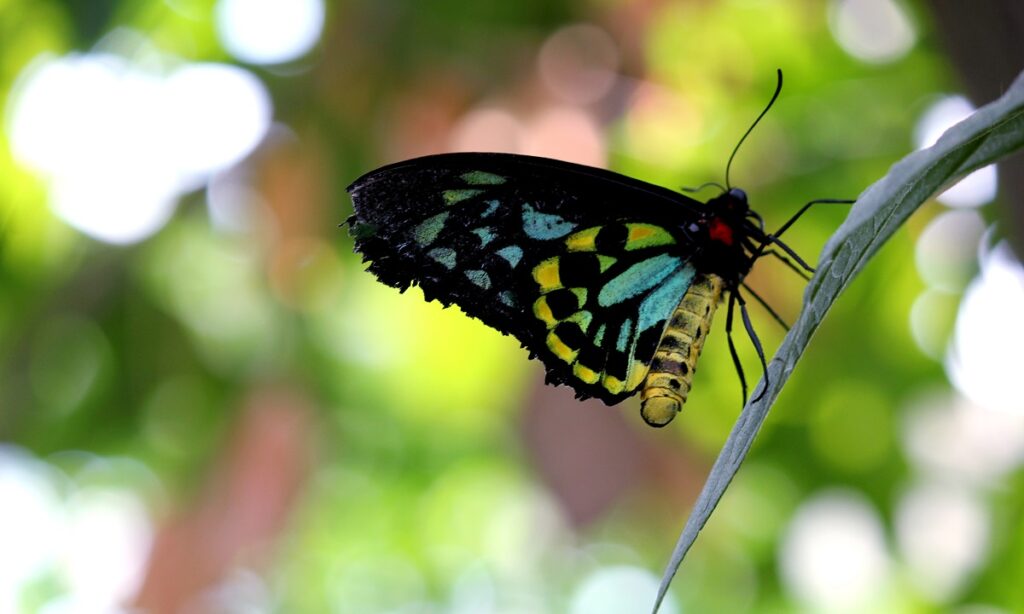
Another beautiful giant insect is Queen Alexandra’s birdwing butterfly that lives in remote regions of Papua New Guinea. Female Queen Alexandra’s birdwing butterflies are larger than their male counterparts, with wingspans exceeding 11 inches and bodies measuring just over 3 inches long.
Among collectors, Queen Alexandra’s birdwing butterfly is highly sought after due to its rarity. And thanks to poaching and habitat destruction, the IUCN has now listed the species as endangered.
Tarantula Hawk
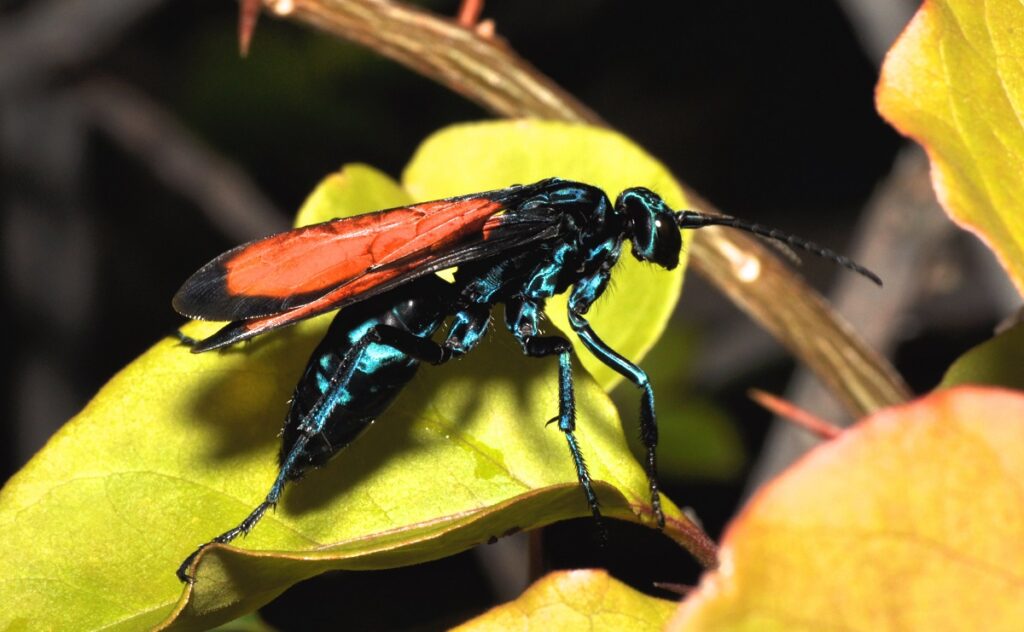
When you hear the word tarantula, your mind instantly goes to spiders. But spiders aren’t actually an insect. So what are tarantula hawks? Well, a tarantula hawk is a member of the wasp family—the largest wasps on Earth.
Measuring around 2 inches long, these wasps are capable of hunting tarantulas—hence their name—feeding the spiders to their larvae by laying eggs in the live tarantula’s abdomen. When the larvae hatch, they essentially eat the spider alive.
With wing spans of 4.5 inches, bodies of up to 2.7 inches, and a quarter of an inch stingers, a sting from these oversized wasps is one of the most painful insect stings in the world—second only to a bullet ant.
Tropidacris Grasshopper
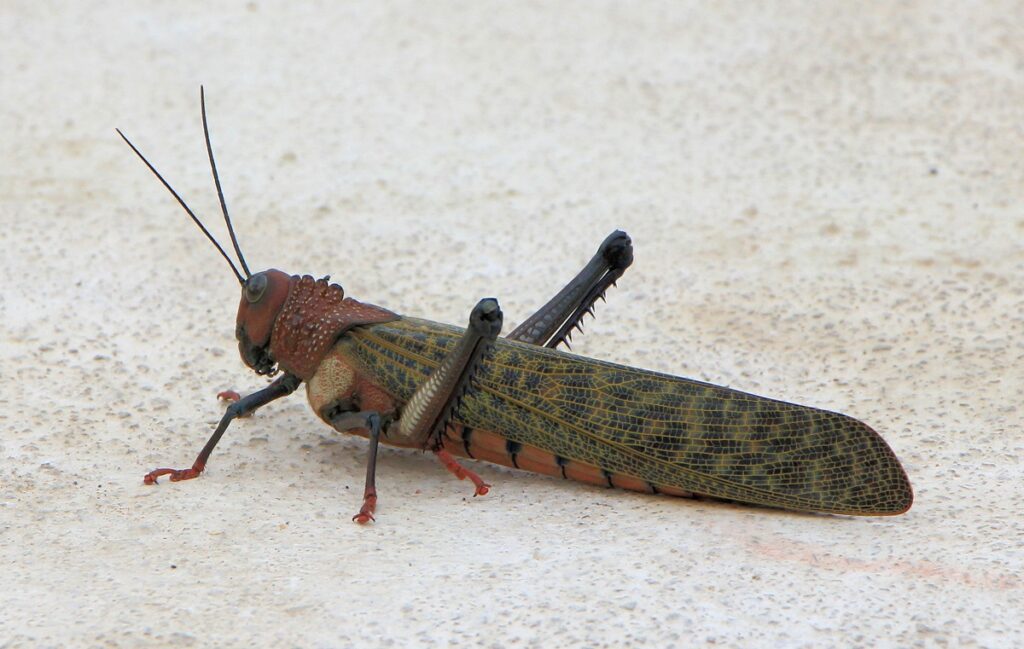
An average grasshopper is around 2 inches. But a Tropidacris can measure over twice that with a body of 5 inches long. You can find Tropidacris grasshoppers over Central and South America. And although they look like any other grasshopper—just larger in size—their 9-inch wings are beautifully colored to resemble the leaves around them.
Mydas Flies

Mydas flies range in size, but one species, the Gauromydas heros, is the largest fly of all. Reaching lengths of 2.8 inches and sporting a wingspan of 3.9 inches, Gauromydas heros are far larger than your average housefly.
With the ability to mimic stinging wasps and bees, larvae that feed on destructive grubs, and a sweet tooth that sees the flies enjoying nectar, mydas flies truly are one of a kind.
Giant Water Bugs
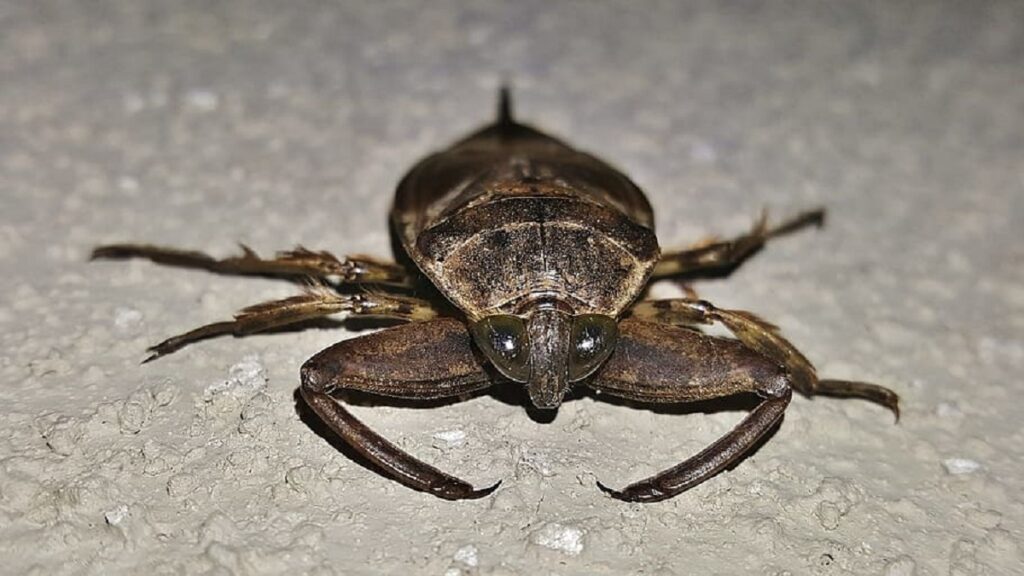
There are some species of giant water bug that are up there amongst the world’s largest beetles. Also known as toe-biters or alligator ticks, giant water bugs can grow up to 4.7 inches long, delivering painful bites and venomous saliva with their giant pincers.
But despite giant water bugs being voracious predators in the streams and ponds they call home, humans throughout South and Southeast Asia actually prey on them as they consider them a delicacy.
Praying Mantis

The final super-sized insect species to make the list is the praying mantis—especially the Chinese mantis, which can grow to be over 4 inches long. Although the species was once only found in China, a nursery tender in Philadelphia accidentally introduced the species to the area in 1896, meaning these mantids can now be found in America.
Like most mantids, Chinese mantis are cannibals, regularly feeding on their mates to provide nutrients for their offspring. With long front legs that feature sharp spikes and reflexes that are so quick they’re hard to see with the naked eye, Chinese mantis snare their prey, pinning it in place before biting its head off.
Biggest Bugs in the World
It’s hard to determine which bug is the biggest bug in the world as there are many different factors that come into play. Weight, length, width, and wingspan are all things we need to consider, which is why there are a few contenders in each individual category.
In terms of length, the stick insect takes first place. If weight is anything to go by, then giant wetas are the reigning champions. And when looking at wings, then, the Atlas moth is truly elite.
Like all animals on the animal planet, these giant bugs have adapted and evolved to improve their chances of survival. Whether they’ve grown to aid in camouflage like the stick insect or developed exceptionally large horns to fight off rivals like the Hercules beetle, the size of these insects isn’t just an accident.
Extinct Largest Insects
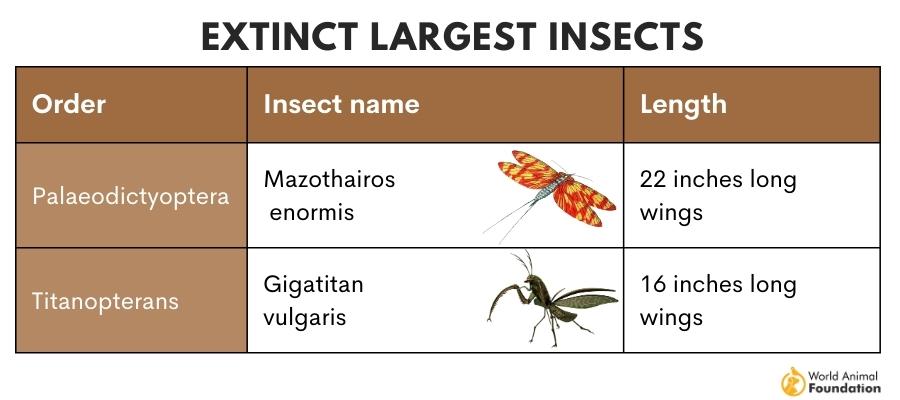
Millions of years ago, giant dinosaurs walked the planet. As did giant insects—some even as large as birds. With the increased oxygen levels in the air, insects were able to grow far larger than the ones we know today.
Despite the fact these insects died and became extinct millions of years ago, through fossils found in Kyrgyzstan and Illinois, we know a bit about two giant insect species—the Mazothairos enormis and the Gigatitan vulgaris—which we go into more detail about down below.
Mazothairos Enormis
The Mazothairos enormis, a large winged insect, roamed the Earth during the Carboniferous period. With a wingspan of 22 inches, the Mazothairos enormis is one of the largest known insects since evolution began—only being documented through one single fossil.
The fossil which paleontologists found in modern-day Illinois showed that the Mazothairos enormis had beak-life mouthparts which they would have used to pierce plant tissues. As the fossil was extremely fragmented, not much else is known about the Mazothairos enormis and how it lived all those years ago.
Gigatitan Vulgaris
Gigatitan vulgaris is a giant bug from the Triassic period which once lived in Kyrgyzstan in Central Asia. Similar to Mazothairos enormis, not much is known about gigatitan vulgaris, but scientists estimate that these massive bugs had 16-inch wingspans and a dense body volume. Due to its weight, scientists believe that gigatitan vulgaris wouldn’t have been able to fly but instead would have glided throughout their habitat.
Similar to the mantis that we know today, gigatitan vulgaris had forelegs fitted with spines to catch their prey. Also, sporting wings with dark stripes were able to produce flashes—reducing predation from predators.
FAQ’s
What Is the Biggest Bug To Ever Exist?
The biggest bugs to ever have existed were griffinflies and giant dragonflies. Through fossils that paleontologists found in France and Kansas, we know that griffinflies—giant dragonflies—had wingspans that could reach up to 28 inches.
Living roughly 300 million years ago, these giant dragonflies grew to their sheer size thanks to a high amount of oxygen in the air. When the oxygen levels began to increase, and birds began to take flight—preying on insects in the process—the population of griffinflies quickly decreased, leading to their extinction.
How Big Was the Biggest Insect That Ever Lived?
The biggest insect that ever lived—the Meganeuropsis permiana, part of the Meganisoptera group—had a wingspan of 28 inches. And when you think that an average chicken has a wingspan of around 20 inches, it really puts into perspective how big these dragonflies would have been.
Largest Insects in the World: Final Thoughts
It’s truly amazing how evolution has changed all sorts of animals on Earth — especially insects which have gotten smaller as the years have gone on. But despite many insects falling under the smallest organisms on the planet category, there are still some that haven’t given up their size.
Even though I’m not the biggest bug lover—in fact, I’m quite the opposite—it’s hard to disagree with the fact that these insects are fascinating. With large pincers for catching prey, beautifully designed wings that are larger than a human hand, and stingers so painful that they’ll put you in hospital, we’ve got to give some credit to the world’s largest insects.


